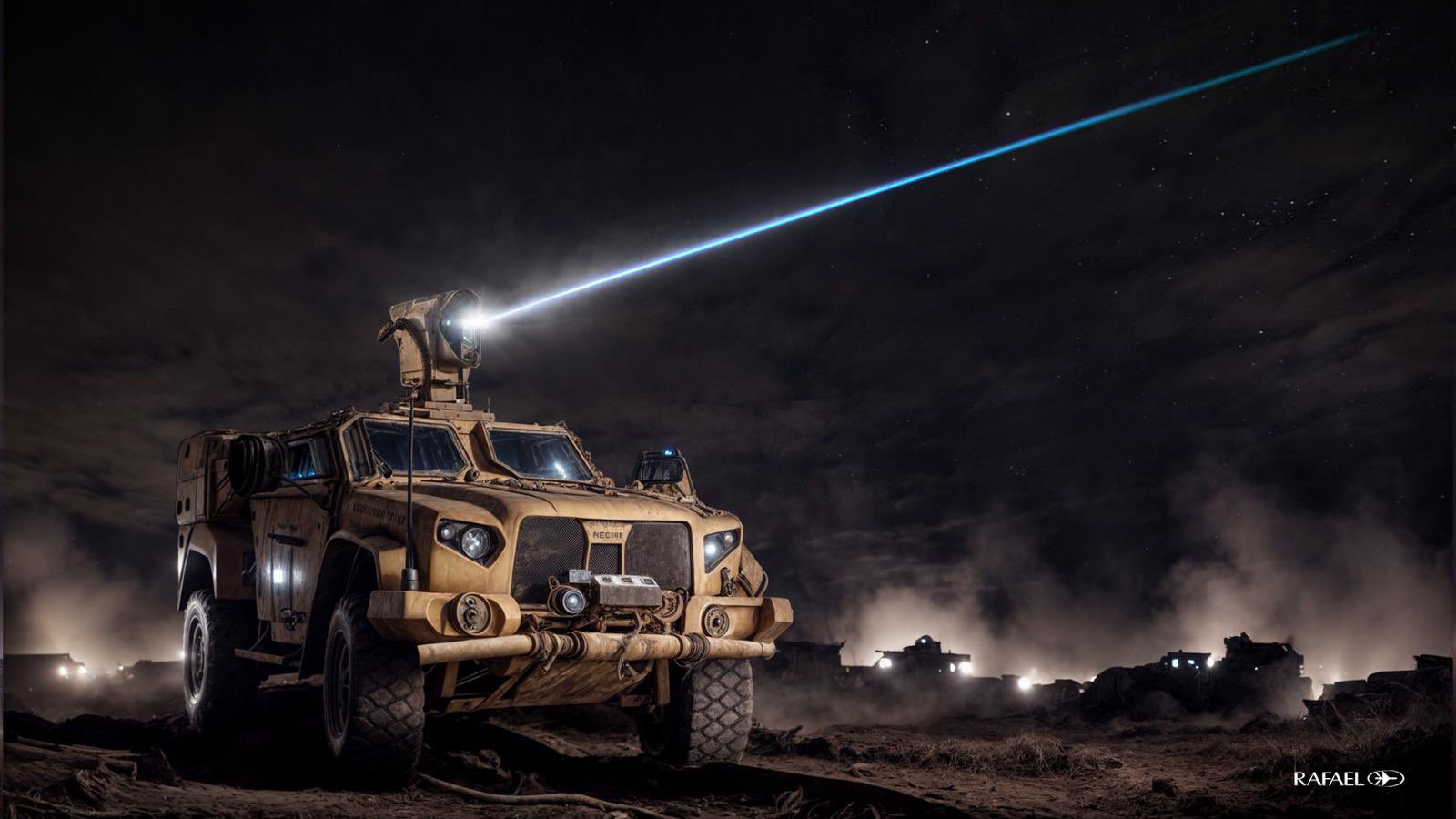Israel’s Rafael Advanced Defense Systems announced that it will debut its state-of-the-art short-range laser defense system, Lite Beam, at the AUSA military exhibition, which will take place in Washington, D.C., from October 14 to 16.
Citing some unknown defense sources, The Jerusalem Post reported that although the Lite Beam was not as groundbreaking as the Iron Beam laser-based air defense system that was unveiled earlier, it is nevertheless a powerful example of Israel’s capability to deploy layers effectively—at least for short-range defense.
The sources reportedly told the publication that the Lite Beam’s capability had already been demonstrated. However, they did not disclose whether the system was tested in the ongoing war against Hamas or Hezbollah.
The Lite Beam will make its debut even as Israel is expediting the deployment of its cutting-edge directed-energy air defense system, dubbed ‘Iron Beam.’ The system, originally anticipated to be operational in a few years, will serve as the short-range component of the Israeli integrated missile defense system.
Russia Unveils Missile-Armed KMZ Vizir Sea Drone; Finally Finds An Answer To Ukrainian Lethal USVs
The manufacturer asserts the Lite Beam would only be useful against drones, drone swarms, and potentially mortars, while the Iron Beam, also a laser-based air defense system, would be able to take down all kinds of hostile missiles, mortars, and rockets.
Rafael stated the Lite Beam system “offers advantages such as engagement at the speed of light, an unlimited magazine, and negligible cost per interception.”
Tzvi Marmor, Rafael’s executive vice president and general manager of the Land & Naval Systems Division, said, “This latest presentation at AUSA highlights RAFAEL’s ongoing commitment to delivering advanced battlefield defense solutions. As global threats evolve, we continue to equip armed forces with cutting-edge technologies to ensure their operational superiority in diverse and challenging environments.”
The Iron Beam debuted at the same AUSA exhibition in 2022. At that time, Rafael announced that the 100kW class Iron Beam High Energy Laser Weapon System was the first documented system of its kind.
Israel’s laser air defense system works with other components of its air defense arsenal, such as the Iron Dome, a well-known system for intercepting short-range missiles and medium—and long-range missiles. Once delivered to the Israel Defense Forces (IDF), the Iron Beam and the Lite Beam would become part of Israel’s formidable layered air defense.
https://twitter.com/iamBrianBJ/status/1843988359711965478
The addition of Lite Beam to Israel’s air defense would be significant, given the proliferation of drones in the region. Laser weapons are beneficial against unmanned aerial vehicles (UAVs) as the concentrated laser beams rapidly heat a drone’s body, resulting in structural failure and burning off of one or both wings.
The laser-based system can also instantly burn a drone’s liquid fuel supply or cause blindness in its optical sensors, especially if the drone is being guided to its exact target by a human controller.
Moreover, the use of lasers in combat would also minimize collateral damage, as opposed to missiles, the debris of which often leads to casualties when they fall on the ground. Several advanced militaries across the world are developing laser-based interceptors and air defense systems since they offer a cheaper alternative to expensive surface-to-air missiles. The Iron Beam, for instance, only costs around $3.50 per shot.
What Do We Know About Lite Beam?
Rafael said that the Lite Beam “offers advantages such as engagement at the speed of light, an unlimited magazine, and negligible cost per interception.”
The Lite Beam is reported to be compatible with any vehicle platform, allowing for its application in various operational contexts. Additionally, it can function as a component of the drone dome, which integrates jamming and soft kill functionalities.
Although the details about this new system are scant, some reports suggest that the Lite Beam is a 10 kW-class HEL that can engage drones as well as ground-based targets from a few hundred meters to 2,000 meters away.
Rafael stated that its “latest modular C-UAS solutions for force protection can operate alongside the Trophy Active Protection System (APS) in a combat formation to enhance ground maneuver capabilities across the battlespace.”
It further added, “The C-UAS Drone Dome solution, with its laser interception capability, can be integrated on 4×4, 6×6, and 8×8 wheeled and tracked vehicles to support counter-drone missions as well as other force protection missions”.

Rafael’s display will feature a novel modular Counter-Unmanned Aerial Systems (C-UAS) design that combines cutting-edge detection and interception technology. This platform includes the Lite Beam laser-based interception system as one of its defense systems.
The introduction of the system this month is significant as it comes at a time of increased volatility in the region. The combat efficacy of the components of Israel’s air defense—such as the Iron Dome—has been called into question in the wake of strikes conducted by Iran, Hamas, and Hezbollah. Some experts believe the repeated exposure may have exposed the Achilles’ heel of IDF’s most popular air defense system.
With no end in sight to the hostilities in the region, Israel has been relentlessly working on expanding its counter-drone capability. The Iron Beam system is expected to be delivered to the IDF by 2025. With the arrival of the Lite Beam, Israel will have two laser-based air defense systems that would add more teeth to its existing arsenal.
- Contact the author at sakshi.tiwari9555 (at) gmail.com
- Follow EurAsian Times on Google News




